How Fashion Fits Into JCPenney’s $1 Billion Polishing Act
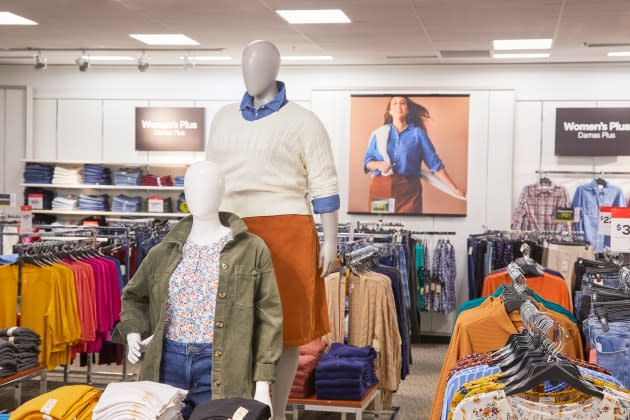
JCPenney’s $1 billion worth of upgrades will be spread around the business, including in new mannequins and on-figure photography.
“This investment allows us to really showcase our fashion,” said Michelle Wlazlo, Penney’s executive vice president and chief merchant.
More from WWD
Wlazlo is discussing Penney’s raison d’être and how the business is improving its customer experience. She highlights the recently enhanced fashion photography for online product and store imagery, clustering new mannequins on the selling floors, storytelling, producing how-to videos, steadily adding beauty brands to the recently rolled out JCPenney Beauty departments, and forming collaborations with celebrities and stylists, among other advancements.
A former senior-level merchant at Target, Wlazlo makes the case for a Penney’s on the mend, though within the industry the debate goes on whether the retailer can maintain relevance after years of top-level management changes, strategy shifts and reversals, meddling by shareholder activists and private equity owners, and a bankruptcy.
Still, there’s new life in the venerable, 120-year-plus old Plano, Texas-based retailer in the aftermath of its purchase by Simon and Brookfield Property Partners in 2020 for $800 million, lifting the business out of bankruptcy and cleaning up the balance sheet. For Simon and Brookfield, Penney’s, an anchor department store in more than 600 locations, is important to the health of shopping centers and it’s prudent to invest in the business.
According to Marc Rosen, Penney’s chief executive officer since November 2021, the company is on strong financial footing, regaining relevance, and even poised for growth, though being privately-owned, Penney’s does not disclose sales or profits making it hard for outsiders to get a precise read on the health of the business.
Rosen’s mantra is a Penney’s “wholly committed to serving hardworking families across America.” Penney’s merchandising primarily appeals to working- and middle-class families, those segments of American society that have been most hurt by inflation and higher interest rates and struggling to make ends meet.
A big part of the agenda he spelled out earlier this year seemed to revolve around efforts to capture more customers in the 20- to 40-year-old demographic. At the same time, he stressed that Penney’s must maintain its older, traditional base and working-class family appeal. Along with expecting a lift from the JCPenney Beauty rollout, key initiatives include localization, creating centralized point-of-sale checkouts to replace checkouts placed in different areas of the store, and equipping associates with devices for mobile checkouts and easy access to information on product availability. It’s about providing speed of checkout, convenience and better service.
Just last August, Penney’s revealed a $1 billion program to improve digital capabilities and experiences, and upgrade stores, technology, merchandising tools, inventory systems and supply chain operations. The company said the investment is self-funded through its own operations and that it builds on “significant progress” made last year across various areas of the company. Also new is Penney’s “Make It Count” marketing strategy, highlighting fashion, beauty and accessories offerings with value, accessible prices and inclusive sizing. Make It Count promotes the benefits of Penney’s credit card and loyalty programs, localized assortments, community involvement and philanthropy, and aims to link customers’ stories of personal moments in their daily lives with JCPenney products.
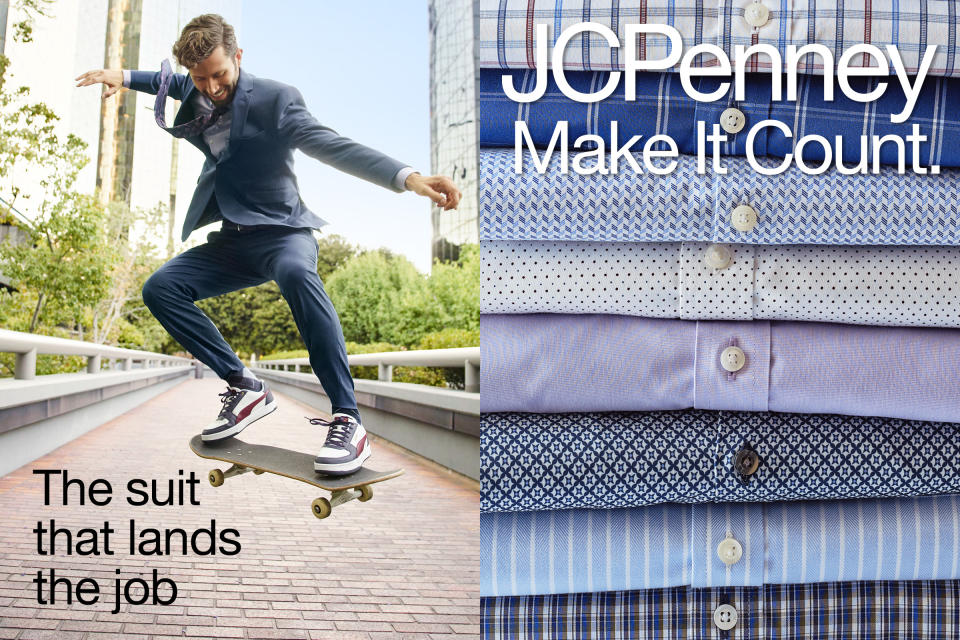
In an exclusive interview with WWD, Wlazlo provided additional details on the $1 billion program, in particular how it will impact Penney’s fashion presentation.
“We have accelerated our advancements online, in particular with storytelling, and we’re seeing click-through rates increase when people visit. But there’s a lot more that’s going to be happening in digital,” Wlazlo said.
“We started doing on-figure photography a little bit last year, but we’re really ramping it up this year, and this fall, you’re seeing it on our latest collaboration, which is with Jason Bolden,” the celebrity stylist who has been reimagining the retailer’s Worthington women’s and J. Ferrar men’s private brands with modern suiting, separates and tailored outerwear.
According to Penney’s executives, digital sales represent about 30 percent of the company’s total volume, and photographing all products on real models rather than having static depictions on hangers or tables has led to a 40 percent decrease in homepage bounce rates and a 10 percent increase in items placed in shopping carts.
Wlazlo made the point that mannequins, like people, can age, and that it was time to bring in a new generation. “By the end of this year, half of our stores, about 300, will have all new mannequins,” she said. “We hadn’t invested in mannequins and storytelling of the product for some time and with all the brand work that we’ve done in the last few years, the most important thing was to actually invest in quality mannequins.”
They come in various shapes, skin tones, sizes and positions — 60 new ones per store. “We see over and over again that whatever is on a mannequin, the customers gravitate toward. It’s a silent sales associate. We’ve made a significant investment here,” Wlazlo said.
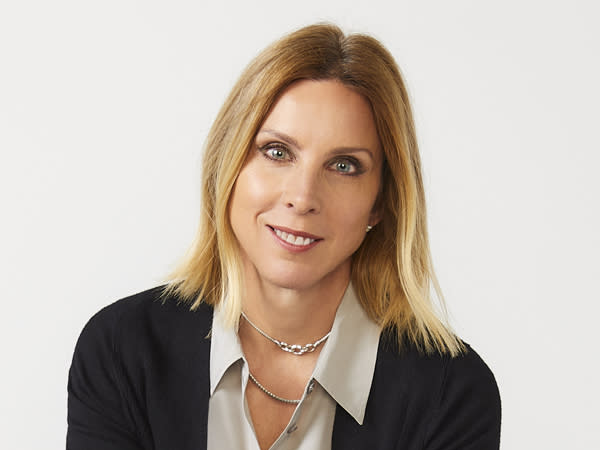
Between the elevated photography and the mannequin influx, Penney’s is better able to project diversity, size inclusion and style, the chief merchant suggested. Penney’s can better show shoppers how to put together outfits, how pieces fit on different body types, how they can be mixed and matched, and the versatility embedded in several styles, meaning they’re appropriate for different occasions. The photography, Wlazlo said, “is a big investment, and it’s a really important investment because people do want to see clothing on people who look like them, and want to get a sense of movement and ease.” With the product display pages online, “you can see the front, sides and the back of garments,” she said.
“We’ve enhanced our storytelling online. It’s no longer just click on this and go shopping on the PDP [product display page]. We really turned the dot-com into an experience like you would get in the stores. It’s a credible fashion dot-com site.
“With the work we’ve done on our brands, with all the [private] brands we’ve relaunched, the site is really starting to tell those stories, which it hadn’t when I first got here,” the chief merchant said. Since Wlazlo joined Penney’s from Target in February 2019, she has led efforts to differentiate and sharpen the identity of key in-house labels like St. John’s Bay, Xersion and a.n.a. and eliminate redundancies from label to label.
Penney’s is also stepping up its video development, which is another big investment, according to Wlazo. It’s noticeable as it pertains to the JCPenney Beauty departments, which completed its rollout to all stores this past May. “We are now showing how to [apply] the perfect eyeliner, how to do perfect lip techniques and we’re showing tools for skin care. The dot-com for us has become much more interactive. People don’t just want to buy. They actually want to understand why they should buy, so it’s where people can feel confident about the product they’re buying.”
On the beauty front, “We’re going to continue to expand our brand portfolio,” Wlazlo said. “We have around 300 brands,” which is nearly double the count from two years ago. Many of the brands are through Penney’s partnership with Thirteen Lune, the online platform selling Black- and brown-owned beauty brands. “We’ll have more, and there is a lot going on in the fragrance space.”
In September, Royalty by Maluma, Calvin Klein Fragrances and It’s a Ten were launched. August launches included Dose of Colors, Ariana Grande, JLO One, Michael Strahan and David Beckham. “We just launched the David Beckham fragrance and it’s already jumped into a top-five fragrance position, which is fantastic, but we’ll do an official launch in October,” Wlazlo said.
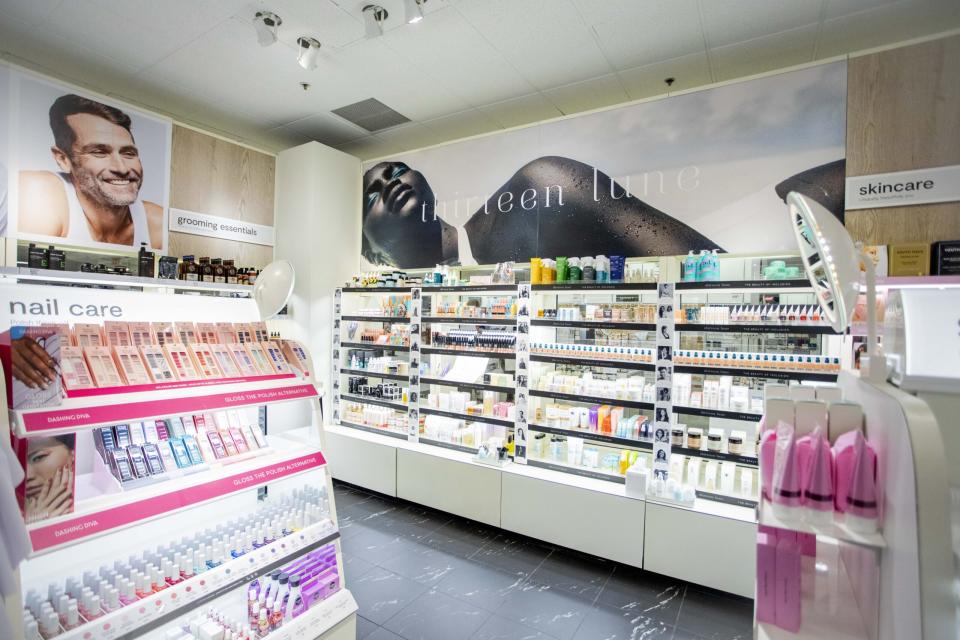
There’s an ongoing store “refresh” program involving paint jobs, new lighting and carpeting. In addition, “We put new photography up in stores, wall posters that are much more akin to the fashion that you are seeing on the site. We do it for all of our private brands,” Wlazlo said.
Shopping Penney’s has become easier through a realignment of brand adjacencies on the selling floor. For example, Penney’s “All Day” department aggregates denim and casual brands together, and the “On Point” area brings suiting and dress brands together. “The reason we’re doing this is we want our customers to be able to shop from multiple brands. So if someone is coming in to get a casual look, and wants to buy some jeans and T-shirts, we don’t want them to have to walk all over the whole store.
“We also created a destination for what we call our ‘Young Minded’ business. Some people call it juniors.” In that space, there’s Penney’s Arizona brand, Forever 21, prom fashions and suiting for the 18-to 25-year-old customer, perhaps interviewing for a first job out of school. “She can go to one destination in the store and find all of her needs,” from sleep, to intimates, dress up and fast fashion, Wlazlo said. “That has been a big change. We’ll keep moving adjacencies where they make sense, but a lot of that work has taken place over the last few years.”
For Penney’s stable of private brands, where most of the overhauling has been completed, opportunities still arise. At the beginning of September, “Under the Stars,” a kid’s bedding brand, launched. “We had this great kids and toddler business, but we had no bedding to go with it,” Wlazlo noted. Also launched not too long ago in young men’s was Dickies and Caterpillar, for workwear.
“They are still white spaces, but we’re being really careful and purposeful,” introducing additional private brands. “We did so much work early on,” Wlazlo said. “We’ll continue to look and assess what we need to do if that means modifying any part of our brand portfolio, but right now we feel really stable with our brand portfolio.” Currently, about 55 percent of Penney’s business is generated through private labels. Generally, the balance between national and private brands is in the 50-50 range, Wlazlo said.
Asked who Penney’s target customer is, Wlazlo reiterated the essence of Rosen’s message. “We are here to celebrate and serve America’s diverse working families, and those families have various age groups in them. We want to get the younger family to come back in,” without losing older, more traditional customers and the store’s working class appeal. “We have a very strong Alfred Dunner business, which is a little bit more of a timeless, more mature brand, and we have a strong Arizona business, which is actually for the young-minded.
“We are a destination for dress up. We always have been, and even through the pandemic, we stuck with it when the category slowed, and it’s paid off. We get the young guy who’s getting his first suit. We get the more established guy who’s always bought his suits from us, from Stafford, J. Ferrar and our national brands. We are also really known for dresses and suiting in women’s,” Wlazlo said, citing Penney’s Liz Claiborne and Worthington labels.
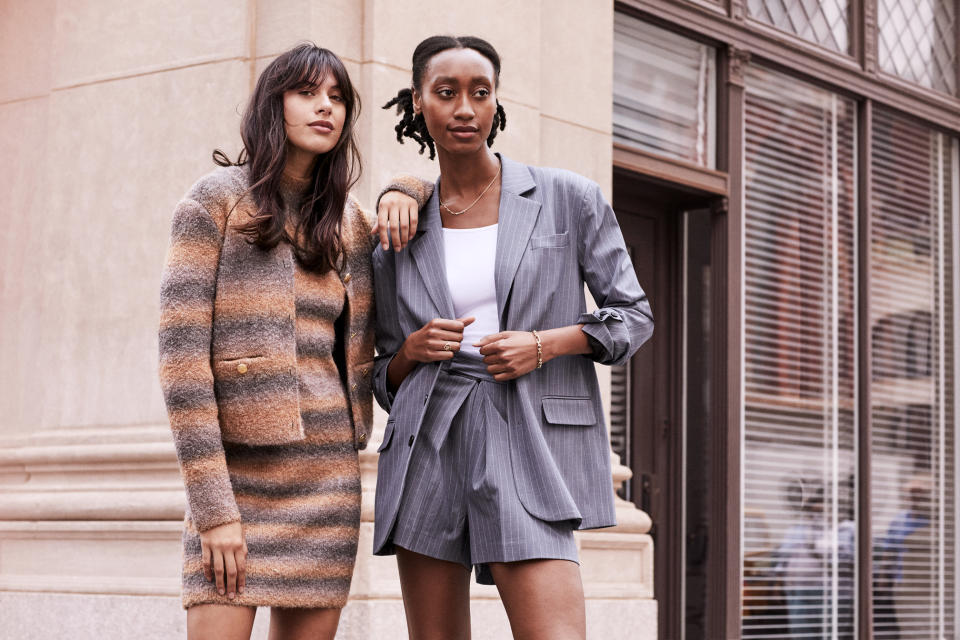
With denim, “We’ve put a ton of effort around expanding our portfolio over the last few years,” Wlazlo said, naming national brands like Levi’s, Wrangler and Gloria Vanderbilt, as well as certain private brands such as Arizona. “We have multiple private and national denim brands that we didn’t have years ago,” Wlazlo added, citing Mutual Weave, a private men’s brand introduced last year.
“JCPenney was once only known for dress up. I would say we’re known for dress up and casual now,” Wlazlo said. In Penney’s stores, there’s a better balance, she added. “Probably the biggest change to JCPenney is that we’re not so known for just the one side of the house. We have both.”
But aren’t Americans continuing to move more toward casual dressing? “We’re seeing anything goes,” Wlazlo said. “Our customer has different occasions and different moods and different needs in mind.”
What Penney’s needs and is on the prowl for are additional collaborations, like the one with Jason Bolden. “We collaborate with people who believe in our customer base,” Wlazlo said. “If someone doesn’t believe in or understand these amazing families that we serve, it’s probably not going to be right for us. Jason Bolden, who we just launched with last week in New York, is a genuine lover of JCPenney and our customers. He tells stories about shopping with his mom and grandmother at JCPenney.”
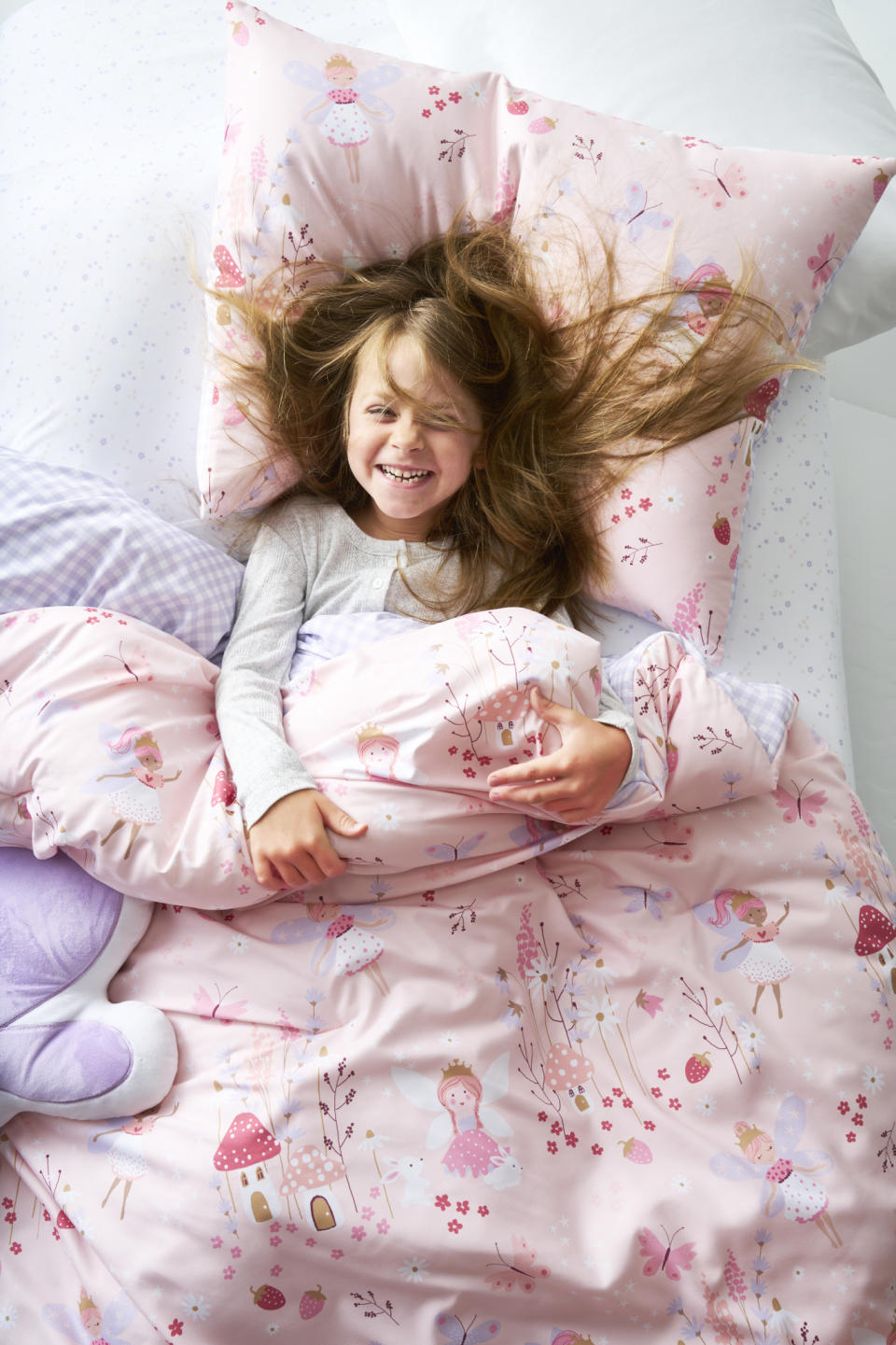
Best of WWD

